Being unfit and inactive are risk factors for stroke. And after stroke (depending on your pre-stroke status), you will be far less physically active and cardiovascularly fit. If you are in either category, if appropriate, this post might be helpful…
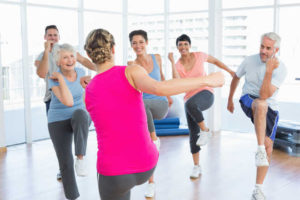 In the UK, stroke services are developing/referring in to stroke-specific community exercise programmes. The system is reasonably analogous to the very well-established rehabilitation services for cardiac disease patients which usually start after usual rehabilitation has ended.
In the UK, stroke services are developing/referring in to stroke-specific community exercise programmes. The system is reasonably analogous to the very well-established rehabilitation services for cardiac disease patients which usually start after usual rehabilitation has ended.
Standard community pathways for exercise and physical activity vary across counties and regions in the UK, but collaborations between health boards and council-run leisure centres have resulted in the establishment of exercise referral schemes which provide a range of exercise programmes delivered in usually in small group sessions. These often utilise community leisure resources.
You can enquire yourself about local services or be referred through local identification mechanisms (GPs, health professionals).
Additionally, some UK Charities, including Stroke Association, Headway, Different Strokes and Strokeability offer free or minimal cost group exercise classes in multiple venues around the country, however these are generally low in frequency (once a week for approximately one hour in duration).
 ARNI offers group classes rarely, preferring to concentrate charitable efforts on getting instructors into people’s homes in order to provide that vital one to one rehabilitation support that can be achieved at lowest cost.
ARNI offers group classes rarely, preferring to concentrate charitable efforts on getting instructors into people’s homes in order to provide that vital one to one rehabilitation support that can be achieved at lowest cost.
Weekly exercise classes for stroke survivors (who also have resulting physical limitations requiring rehab) should be considered supplementary to what you are already doing at home and elsewhere to attempt to recover. Cost does come into this of course.
Apart from ramping up physical activity and cardio activity, by far the most important part of recovery from many stroke survivors’ points of view is rehabilitation. Hence ARNI’s concentration on teaching you techniques to tackle hundreds of improvement activities including weight-bearing, balance and gait-control (including how to cope with drop-foot and reducing the required supporting power of the AFO over time, etc), coping strategies (such as getting down and up from the floor unaided and emergency action avoidance techniques, turning etc), upper limb training (tackling spasticity. flaccidty etc) one to one, with the help of a physio or trainer, as well as how to train for cardio effect independently at home.
Wow, there’s so much to do after stroke, right?
Well, yes maybe it seems like it, but segmented into mini-efforts, it can definitely be done. You have potential to do better. PLEASE don’t get disillusioned and not make a start.
This is going to be a long term effort, with sometimes little discernible result, but believe me, absolutely everything you do matters.
Let’s define things, so you can take action.
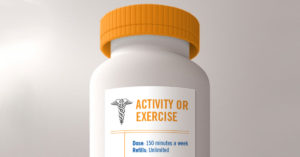 Exercise is a physical activity that is planned, structured, repetitive, and purposeful. Physical activity includes any body movement that contracts your muscles to burn more calories than your body would normally do so just to exist at rest. Although learning to enjoy and plan structured exercise into your routine would definitely improve fitness, it is not the only way to improve fitness. Activities of daily life keep your body moving and still count toward the recommended amount of weekly physical activity. Most importantly, no matter what your current fitness level, you are able to improve your physical fitness and therefore, your heart health, by increasing physical activity and/or exercise as you are able.
Exercise is a physical activity that is planned, structured, repetitive, and purposeful. Physical activity includes any body movement that contracts your muscles to burn more calories than your body would normally do so just to exist at rest. Although learning to enjoy and plan structured exercise into your routine would definitely improve fitness, it is not the only way to improve fitness. Activities of daily life keep your body moving and still count toward the recommended amount of weekly physical activity. Most importantly, no matter what your current fitness level, you are able to improve your physical fitness and therefore, your heart health, by increasing physical activity and/or exercise as you are able.
What you should be doing in terms of exercise is regarding it as comparable to a prescription of medication.
Ie, it’s probably best taken every day. You should only start exercising once you have recovered enough and only do as much as you can manage. Talk to your doctor or therapist about what is right for you.
Here’s how you can optimise everything from now on (ie, minimise time on training and maximise time on LIVING LIFE!!).
These three priorities should be the ‘spend’ and the ‘reward’ is knowing you are doing everything optimally to recover and vastly diminish possibilities of further complications.
- Try and secure rehabilitation at home one to four times per week with a physio or trainer. There are lots of options. Physiotherapy clinics are all over the place with some first-class physios ready to provide excellent rehabilitation. This website, of course, shows you how to get a physio or trainer in your area who will come to your house and help you optimally, for around £45 to £50 per full hour. This can be even be supplemented by telerehabilitation (focused on upper limb training) with your instructor for around £20, during the week.
- Do cardio on a machine (stationary bicycle, recumbent bicycle, treadmill) at home every day, for 10 to 30 minutes, depending on status.
- Be as physically active throughout the day as you can.
Knowledge is power – let’s look at the meanings of cardiovascular exercise, sedentary behaviour and physical activity – so that you can quickly figure out the optimal choices for you – and how best to save time and money.
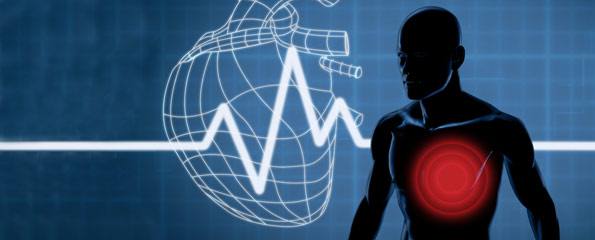 Cardiovascular exercise covers everything from walking, jogging or running over-ground or on a treadmill (with or without bodyweight support such as the Alter-G anti-gravity treadmill), to cycling, recumbent stepping or swimming. Many people call it ‘cardio’ exercise.
Cardiovascular exercise covers everything from walking, jogging or running over-ground or on a treadmill (with or without bodyweight support such as the Alter-G anti-gravity treadmill), to cycling, recumbent stepping or swimming. Many people call it ‘cardio’ exercise.
Cardio is a therapeutic intervention that, despite the known benefits, is under-utilised by clinicians during rehabilitation. So, do not feel guilty if you have not done any since your stroke. But let’s start putting that to right.
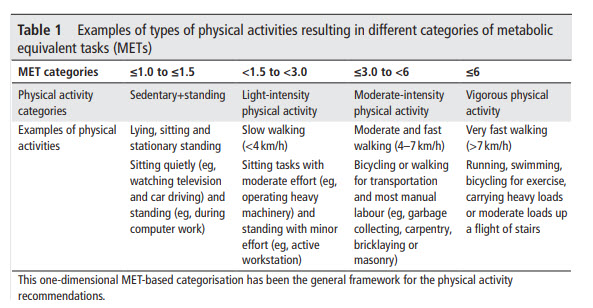
Sedentary behaviours are basically any waking behaviours characterised by an energy expenditure of ≤1.5 metabolic equivalents (METs), while in a sitting, reclining or lying posture.
The chart shows you the different levels of physical activity.
Most stroke survivors are stuck firmly in sedentary behaviour levels.
Over the last 10 years, evidence has emerged that too much sedentary time (e.g. time spent sitting down) is related to a multitude of physiological consequences that result in reduced fitness, increased cardiovascular risk and increased risk of further sickness and even death.
It is important to note the distinction in definition between sedentary behaviours and physically inactivity (defined as: an insufficient physical activity level to meet present physical activity recommendations – e.g. not achieving 150 minutes/week of moderate intensity activity).
Note: an individual may be physically inactive but have low levels of sedentary time across their day, or vice versa. So, a person could meet physical activity recommendations but also spend considerable time in sedentary behaviours.
But do daily METs really ‘tell the whole story’ of the health effects from physical activity? Maybe not.
A number of crucial physical attributes beyond daily METs for health are either unexplored or have received very little attention. For example, improvements in cardio fitness requires physical activity levels of relatively high intensity (>60% of maximal cardiorespiratory fitness). Thus, large volumes of daily METs at a lower intensity may improve metabolic fitness, but not cardiorespiratory fitness (due to insufficient stimulus on the cardiorespiratory system to adapt for higher physical activity demands).

Amazingly, workers in manual jobs (eg, cleaners) measured to walk about 20,000 steps per day still have poor cardiorespiratory fitness. On the contrary, high-intensity interval training for very short time improves cardiorespiratory fitness despite low total METs spent.
Given this, it is clear that you need to adjust some variables here.
The main principle used when defining and prescribing physical activity is called The FITT principle.
The great news is that exercise training is a really potent stimulus for improving fitness and cardiovascular risk after stroke – and it doesn’t have to be at all onerous.
The dose of physical activity is different from person to person taking into consideration your capacity and limitations while also making sure you can adhere to the activity and safely complete it. And the best physical activities provide progressive challenge over time.
It is recommended you should try and complete frequent but shorter sessions. This still may sound like a lot to do, but it does need to be contemplated. Look below at the chart ‘Interval Training Set’ for exactly how to do it.
Cardiovascular exercise has many health benefits to strengthen the heart’s efficiency.
The heart is one of the powerhouses of the body. When you strengthen your heart, you strengthen your whole system, including the arteries. With every heartbeat it puts pressure on your arteries, which transports a constant flow of blood throughout the body.
Exercise improves the heart’s efficiency by increasing the number of your smallest arteries called capillaries (this is called an increase in capillary density); which allows greater exchange of those nutrients your body requires. Cardiovascular exercise also increases the amount of blood that leaves the heart with every beat (stroke volume) meaning the heart doesn’t have to beat as many times per minute; the heart essentially doesn’t have to work as hard, increasing its efficiency.
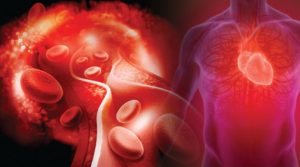 In terms of your arteries, aerobic exercise decreases what is called arterial stiffness, this allows for the blood to be pushed along the arteries through proper dilation and contractibility, with an adequate amount of pressure.
In terms of your arteries, aerobic exercise decreases what is called arterial stiffness, this allows for the blood to be pushed along the arteries through proper dilation and contractibility, with an adequate amount of pressure.
A recent systematic review has shown that exercise interventions can result in clinically meaningful blood pressure reductions. Particularly if initiated early and alongside education about healthy lifestyle. In a haemorrhagic stroke, long-term arterial stiffness weakens the arteries. And with a rise in pressure, arteries can burst. Cardiovascular exercise is the first step to keeping or creating a healthy heart and arteries while a second intervention is diet. I will reveal more on healthy diet for stroke survivors in a next post. Your blood contains important factors that can keep you functioning properly, such as oxygen and many nutrients transported through the arteries.
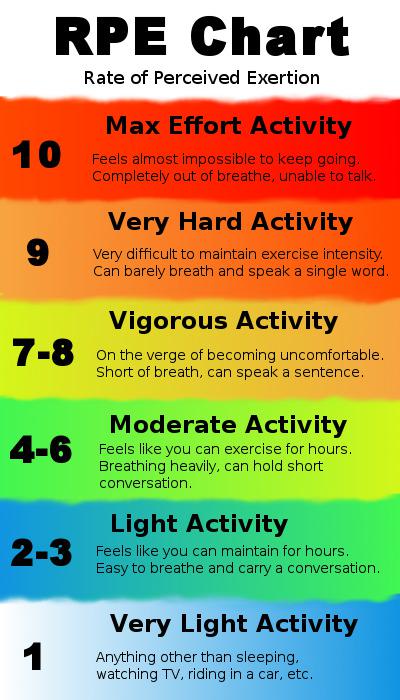 Intensity of exercise is dependent on your heart rate or the amount of effort you feel you are exerting. To determine how ‘hard’ your heart is working and the intensity during exercise is also depended on your age. The more intense the activity the higher your heart rate will be. You might hear the phrase Rate of Perceived Exertion or RPE for short.
Intensity of exercise is dependent on your heart rate or the amount of effort you feel you are exerting. To determine how ‘hard’ your heart is working and the intensity during exercise is also depended on your age. The more intense the activity the higher your heart rate will be. You might hear the phrase Rate of Perceived Exertion or RPE for short.
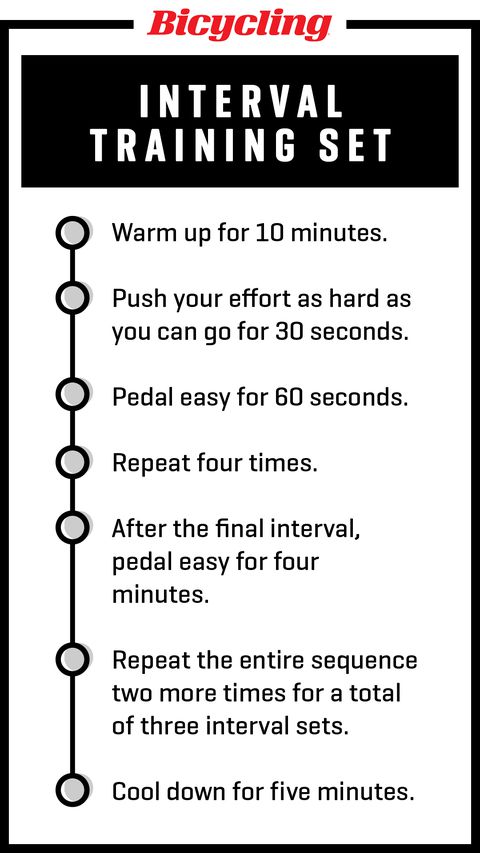
This is a scale that generally runs from either 6-20 (6 being resting while 20 is a maximal exertion during exercise) or a scale of 0-10 (0 being resting and 10 being maximal exertion during exercise). This scale is used to see how hard you perceive the activity to be.
It is advised to complete 3-6 days per week for 10-60 minutes per session depending on your status and the intensity of the exercise being completed. To get this done most efficiently, use the HITT principle, with permission from your GP.
HIIT training is high intensity interval training: a type of cardio workout where you will perform a set of exercises, alternating between high intensity periods and active or full recovery. These are short sessions of of intense work. The intense periods can vary from 10 seconds to 1 minute long and should be performed at 80 to 95% of maximum heart rate.
It should feel like you are working hard to very hard and be short of breath. If you use the talk test you would struggle to carry on a conversation. The recovery periods are performed at 40 to 50% of maximum heart rate. This is the period where you would feel comfortable and allow the body to recover and prepare for next work interval. You can also use the RPE chart where work intervals are between 8 to 10 and rest periods are from 4 to 6. The relationship between the work and rest periods is very important. The length of work and rest can be equal in length or the rest period can be shorter than the work period. This depends on your fitness levels as well as what you are actually doing in your work period.
 Cardio exercise. It’s a good idea to plan from the start, how you are going to get cardio exercise done by yourself at home. In the beginning you may be nervous about doing some exercise training at home without supervision, but if you’re smart about it you can do it safely and successfully.
Cardio exercise. It’s a good idea to plan from the start, how you are going to get cardio exercise done by yourself at home. In the beginning you may be nervous about doing some exercise training at home without supervision, but if you’re smart about it you can do it safely and successfully.
What to buy? It depends on your wallet, space in your house and other personal factors of course, but some general advice below.
Stationary exercise machines such as bikes are great, as you can use them without worrying about your balance.
A rowing machine is probably a no-no – it’s a sure-fire way to mess with your shoulder if you have subluxation in your more-affected upper limb.
Treadmills are risky unless you have two hands that work (you do need to be able to hold on!)
Ellipticals are often hopeless for those with upper-limb weakness (the more-affected hand cannot hold onto the handle), but some survivors make them work, no problem.
A much better bet for stroke survivors are stationary bikes that are more horizontal in nature rather than vertical.
These are known as recumbent or semi-recumbent bikes (depending how reclined it is). These types of gym bikes can be picked up relatively affordably from a variety of places. These are, for many, much better solutions. And they hold an excellent re-sale value.
 I strongly advise the recumbent bicycle for stroke survivors with upper limb limitations – this solution is the best I’ve found. Here is my own one. See pic too. It sits in my office and is absolutely great. If you get one, you can prop an Ipad on the small tray where the display is and watch box sets or TED talks on youtube as you pedal!
I strongly advise the recumbent bicycle for stroke survivors with upper limb limitations – this solution is the best I’ve found. Here is my own one. See pic too. It sits in my office and is absolutely great. If you get one, you can prop an Ipad on the small tray where the display is and watch box sets or TED talks on youtube as you pedal!
I also have a commercial treadmill (fold-up one) in my office and do fast walking, covering around two miles per day on it using inclines varying from 0% to 15%. I also wear a 20kg weighted back pack. I try and do two sessions of 23 minutes each to complete the 2 miles. Sometimes it’s just one mile I manage to get done on top of weight training. This is actually just to ramp up physical activity (and a bit more power) in my more-affected leg.
But obviously I’ve worked up to this. I’m also holding on tightly throughout, to both handles! So this advice is only for those stroke survivors who have been spared upper limb limitations, or have rehabilitated to such a good functional level that they feel able to use the treadmill safely. You will find that the treadmill has a fail-safe cord on it too which cuts the motor if you move too far from the control bar.
You can get amazing deals on these. I got mine for around £430. New, they are around £1100. This was because it was an ex-demo model. I just ensured that it was refurbished before buying. Have a look at Fitness Superstore. In this link I’ve found you the page for reduced price treadmills.
Mainly, it’s about doing what you can do, within exercise after stroke guidelines which are clearly available just by googling.
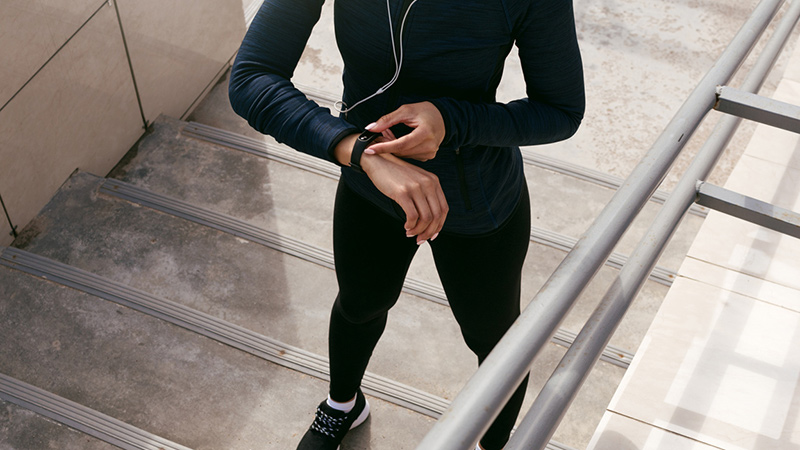 A final point: it’s a good idea to monitor yourself while exercising, so you can follow your own progress and also know when you need to push yourself a little further. There are several ways you can do this. Heart rate monitors are a great way to keep track of the intensity you are working at. Speak with your GP to find out what heart rate you should be working at for your age.
A final point: it’s a good idea to monitor yourself while exercising, so you can follow your own progress and also know when you need to push yourself a little further. There are several ways you can do this. Heart rate monitors are a great way to keep track of the intensity you are working at. Speak with your GP to find out what heart rate you should be working at for your age.
Pedometers are probably a more readily available and simple way to monitor how much you do in the sense of how many steps. However, ideally you want to be doing these steps fast if you want to improve your health and fitness. Physical activity watches such as a FitBit can track all sorts of things throughout your day such as activity, sleep and heart rate. If you want a way to begin tracking your activity levels to continue with your recovery one of these gadgets could be very useful in tracking your improvements over time.
 In terms of physical activity, I encourage you to incorporate a variety of exercises in to your lifestyle. Particularly things like getting out of your residence and walking as well as you can (accompanied as appropriate), swimming (swimming classes for stroke survivors are often available and run by some ARNI INSTRUCTORS) and are a great way to socialise while achieving something.
In terms of physical activity, I encourage you to incorporate a variety of exercises in to your lifestyle. Particularly things like getting out of your residence and walking as well as you can (accompanied as appropriate), swimming (swimming classes for stroke survivors are often available and run by some ARNI INSTRUCTORS) and are a great way to socialise while achieving something.
Physical activity, rehab activity and cardio activity – each one followed by kettle and mug activity!
All is possible!
 Fatigue is often experienced after acquired brain injury and people often try to manage via fatigue strategies such as planning and pacing. In order to use such strategies, the individual needs to build a picture of how their fatigue affects them in daily life. Usually, a daily diary sheet of sleep, rest, activity and fatigue is completed. Apps on smart phones are able to collect “in the moment” information about people’s fatigue experiences and to collect information about sleep and rest patterns. This information could help the person with brain injury, their carers and their therapists to learn about their fatigue more effectively, and identify triggers and patterns of fatigue.
Fatigue is often experienced after acquired brain injury and people often try to manage via fatigue strategies such as planning and pacing. In order to use such strategies, the individual needs to build a picture of how their fatigue affects them in daily life. Usually, a daily diary sheet of sleep, rest, activity and fatigue is completed. Apps on smart phones are able to collect “in the moment” information about people’s fatigue experiences and to collect information about sleep and rest patterns. This information could help the person with brain injury, their carers and their therapists to learn about their fatigue more effectively, and identify triggers and patterns of fatigue. A student researcher conducting his doctorate at Oxford Brookes University has developed an early prototype of an app, based on interviews with people with brain injury. This app works on android mobile phones and asks the user (who has experienced a stroke or other brain injury) to rate their fatigue, identify what they were doing at the time… and to complete a reaction time test.
A student researcher conducting his doctorate at Oxford Brookes University has developed an early prototype of an app, based on interviews with people with brain injury. This app works on android mobile phones and asks the user (who has experienced a stroke or other brain injury) to rate their fatigue, identify what they were doing at the time… and to complete a reaction time test.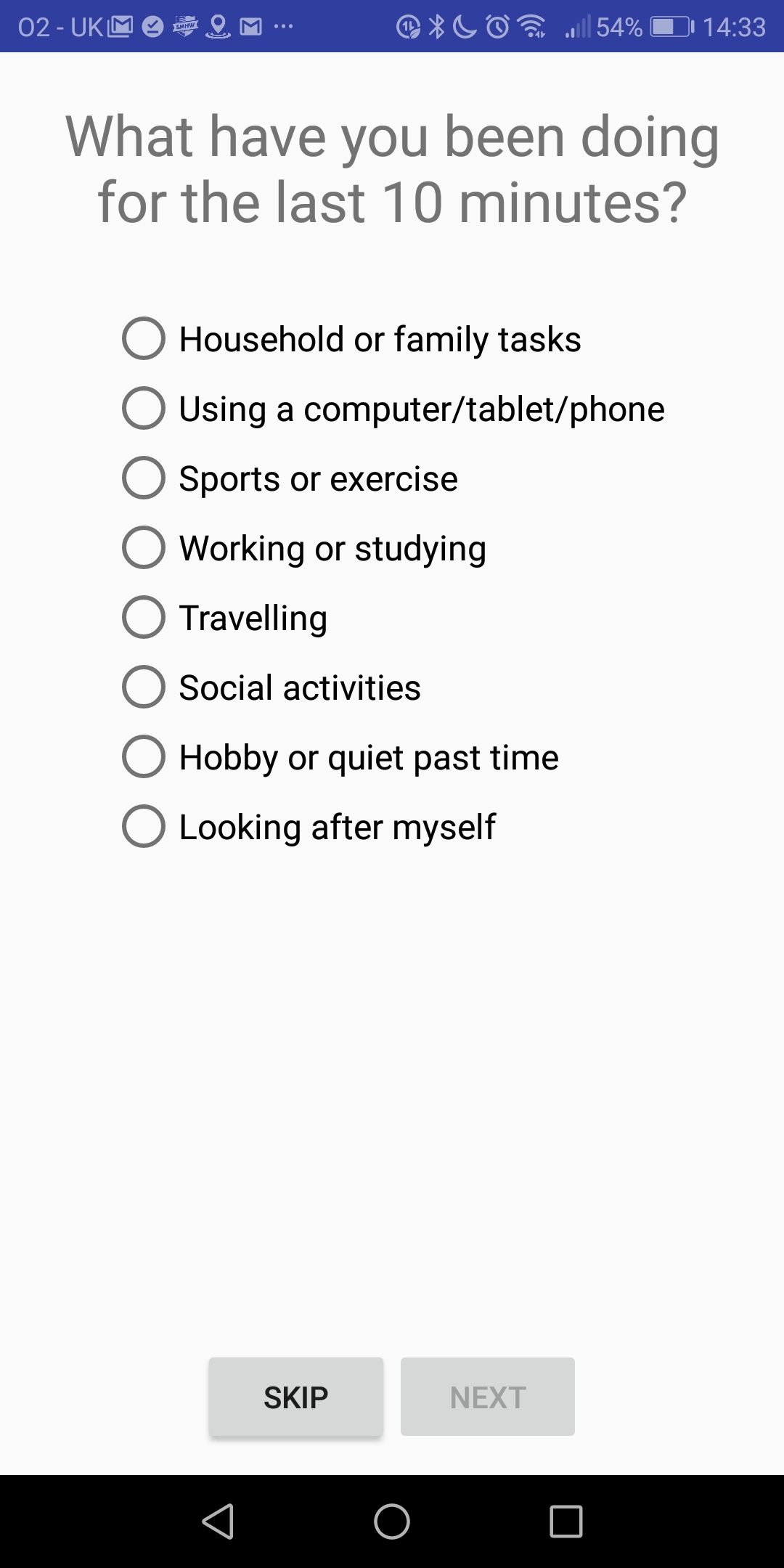
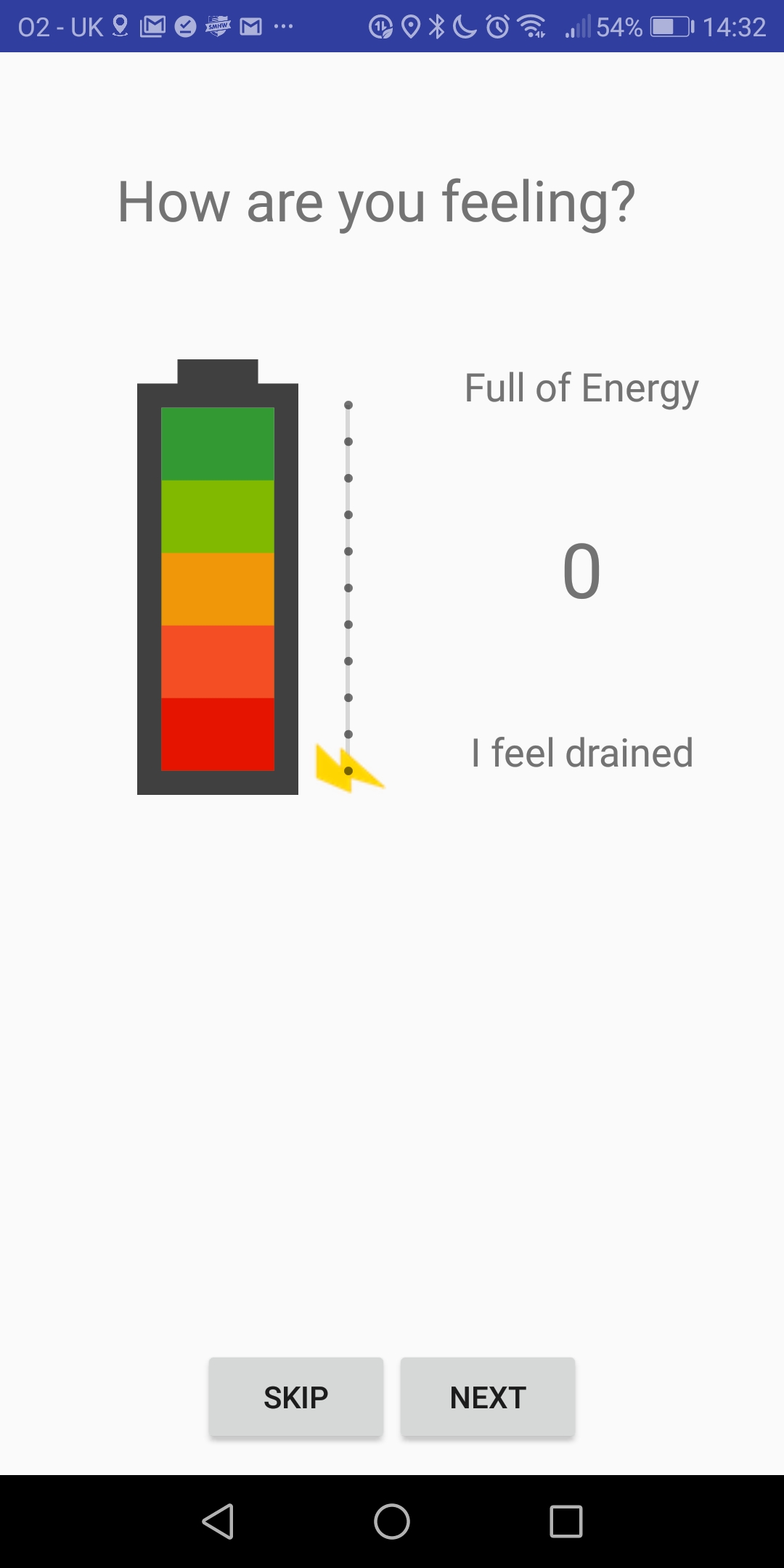
 The University thanks you in advance for your consideration: the student hopes that outcomes from this study will contribute towards the development of a usable app for assessing people’s experience of fatigue after brain injury. Such an app may then support more effective interventions for fatigue after brain injury.
The University thanks you in advance for your consideration: the student hopes that outcomes from this study will contribute towards the development of a usable app for assessing people’s experience of fatigue after brain injury. Such an app may then support more effective interventions for fatigue after brain injury.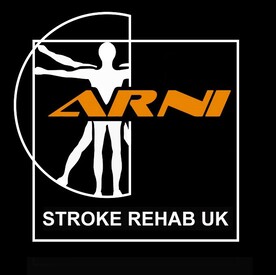
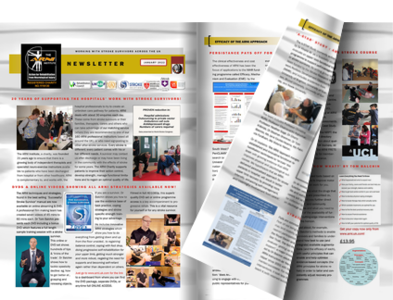
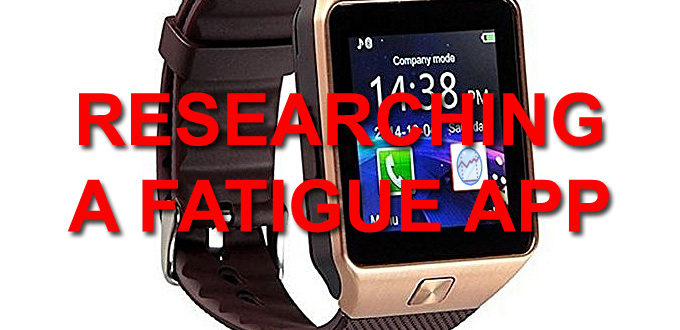
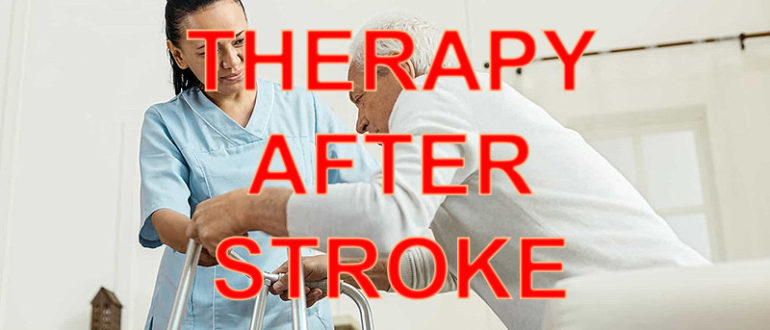
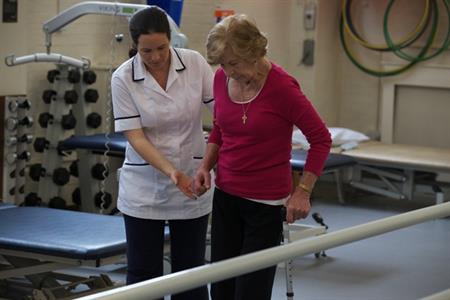 If you’re a current patient reading this, both are about to become your best friends. They are also going to be pushing you hard. This is for a very good reason however. They are going to get you moving. Focusing mainly on your physical rehabilitation, physiotherapists and occupational therapists usually build custom plans to fit these needs.
If you’re a current patient reading this, both are about to become your best friends. They are also going to be pushing you hard. This is for a very good reason however. They are going to get you moving. Focusing mainly on your physical rehabilitation, physiotherapists and occupational therapists usually build custom plans to fit these needs.  Physiotherapy begins with the most basic tasks and movements, with the aim of protecting your more-affected side from injury. These gradually progress to exercises and tasks that aim to improve your balance, help you relearn basic coordination skills and functional tasks such as successfully handling objects and walking. During this time, what’s your overall mission to be? The answer is ‘everything you humanly can’. Along with post-stroke weakness in one or more limbs, stroke survivors of all ages frequently are de-conditioned as a result of immobility, fatigued on a daily basis and often have insufficient underlying motor activity to start the kind of task-related practice they need to do, which does make everything much harder.
Physiotherapy begins with the most basic tasks and movements, with the aim of protecting your more-affected side from injury. These gradually progress to exercises and tasks that aim to improve your balance, help you relearn basic coordination skills and functional tasks such as successfully handling objects and walking. During this time, what’s your overall mission to be? The answer is ‘everything you humanly can’. Along with post-stroke weakness in one or more limbs, stroke survivors of all ages frequently are de-conditioned as a result of immobility, fatigued on a daily basis and often have insufficient underlying motor activity to start the kind of task-related practice they need to do, which does make everything much harder.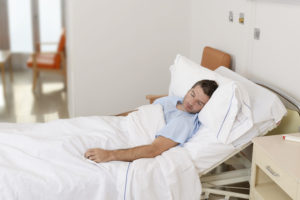 Survivors are noted to be inactive (and alone, in therapy terms) for much of the day as inpatients. This is time that is acknowledged by
Survivors are noted to be inactive (and alone, in therapy terms) for much of the day as inpatients. This is time that is acknowledged by  good thing to do so – it may not be, depending on daily presentation) that will be in play. One thing stands out from the evidence: that it has been shown that family participation in exercise routines for stroke patients empowers the caregiver’s help and may reduce their stress levels. Which is definitely a good thing. Making family members, carers and friends feel they are useful and contributing to the process is good.
good thing to do so – it may not be, depending on daily presentation) that will be in play. One thing stands out from the evidence: that it has been shown that family participation in exercise routines for stroke patients empowers the caregiver’s help and may reduce their stress levels. Which is definitely a good thing. Making family members, carers and friends feel they are useful and contributing to the process is good.
 Information provision remains a commonly reported unmet need in rehab. Stroke survivors and carers consistently report that they do not know enough about the mechanisms, cause, and consequence of stroke. It is difficult to know whether this is a true expression of lack of needed knowledge or a reflection of stroke survivors’ and carers’ continued post-stroke uncertainty. A
Information provision remains a commonly reported unmet need in rehab. Stroke survivors and carers consistently report that they do not know enough about the mechanisms, cause, and consequence of stroke. It is difficult to know whether this is a true expression of lack of needed knowledge or a reflection of stroke survivors’ and carers’ continued post-stroke uncertainty. A  Similarly for upper limb, perhaps
Similarly for upper limb, perhaps 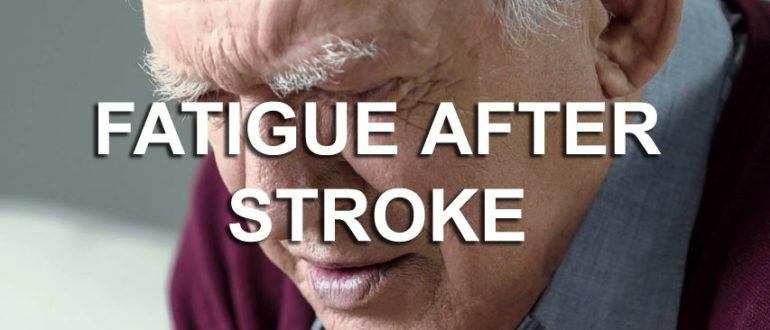
 Research into fatigue is at its very early stages. Work to contribute towards a treatment has now been spearheaded by Dr Anna Kuppuswamy, the lead researcher on the project.
Research into fatigue is at its very early stages. Work to contribute towards a treatment has now been spearheaded by Dr Anna Kuppuswamy, the lead researcher on the project.


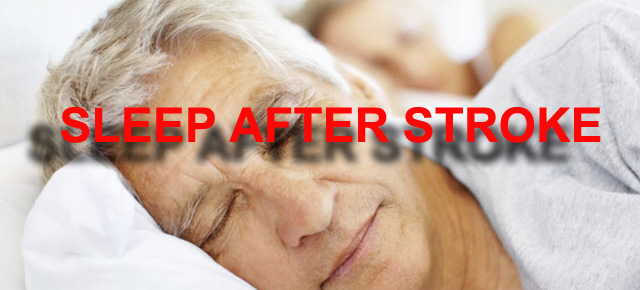
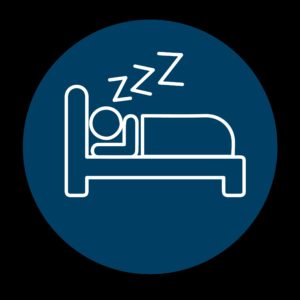 Researchers at the University of Oxford are currently investigating how sleep is affected by stroke.
Researchers at the University of Oxford are currently investigating how sleep is affected by stroke.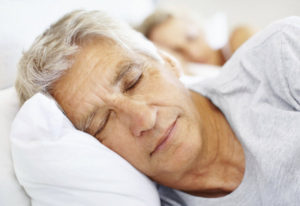 We know that sleep plays an important role in learning. Studies have shown that if you take two groups of people and teach them the same skill, such as juggling, then allow one group to sleep for a few hours and keep the other group awake, the sleep group will perform significantly better when retested as they have been able to consolidate the memories of learning the skill through sleep.
We know that sleep plays an important role in learning. Studies have shown that if you take two groups of people and teach them the same skill, such as juggling, then allow one group to sleep for a few hours and keep the other group awake, the sleep group will perform significantly better when retested as they have been able to consolidate the memories of learning the skill through sleep.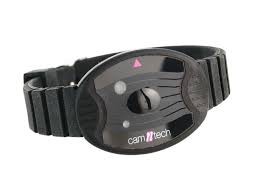 The current study involves coming to a research centre in Oxford for one session to complete a couple of motor assessments with the upper limbs and to answer a couple of questionnaires about your sleep and mood. Then researchers will set you up with a pair of sleep monitoring wrist watches for you to wear for a week with a simple sleep diary asking what times you go to bed and get up each day.
The current study involves coming to a research centre in Oxford for one session to complete a couple of motor assessments with the upper limbs and to answer a couple of questionnaires about your sleep and mood. Then researchers will set you up with a pair of sleep monitoring wrist watches for you to wear for a week with a simple sleep diary asking what times you go to bed and get up each day. If you would like to join this study/find out more, please feel free to contact the researchers:
If you would like to join this study/find out more, please feel free to contact the researchers: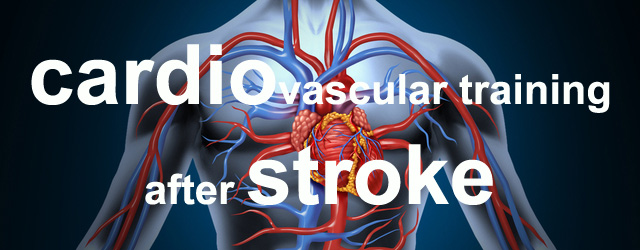
 In the UK, stroke services are developing/referring in to stroke-specific community exercise programmes. The system is reasonably analogous to the very well-established rehabilitation services for cardiac disease patients which usually start after usual rehabilitation has ended.
In the UK, stroke services are developing/referring in to stroke-specific community exercise programmes. The system is reasonably analogous to the very well-established rehabilitation services for cardiac disease patients which usually start after usual rehabilitation has ended. ARNI offers group classes rarely, preferring to concentrate charitable efforts on getting instructors into people’s homes in order to provide that vital one to one rehabilitation support that can be achieved at lowest cost.
ARNI offers group classes rarely, preferring to concentrate charitable efforts on getting instructors into people’s homes in order to provide that vital one to one rehabilitation support that can be achieved at lowest cost. Exercise is a physical activity that is planned, structured, repetitive, and purposeful. Physical activity includes any body movement that contracts your muscles to burn more calories than your body would normally do so just to exist at rest. Although learning to enjoy and plan structured exercise into your routine would definitely improve fitness, it is not the only way to improve fitness. Activities of daily life keep your body moving and still count toward the recommended amount of weekly physical activity. Most importantly, no matter what your current fitness level, you are able to improve your physical fitness and therefore, your heart health, by increasing physical activity and/or exercise as you are able.
Exercise is a physical activity that is planned, structured, repetitive, and purposeful. Physical activity includes any body movement that contracts your muscles to burn more calories than your body would normally do so just to exist at rest. Although learning to enjoy and plan structured exercise into your routine would definitely improve fitness, it is not the only way to improve fitness. Activities of daily life keep your body moving and still count toward the recommended amount of weekly physical activity. Most importantly, no matter what your current fitness level, you are able to improve your physical fitness and therefore, your heart health, by increasing physical activity and/or exercise as you are able. Cardiovascular exercise covers everything from walking, jogging or running over-ground or on a treadmill (with or without bodyweight support such as the Alter-G anti-gravity treadmill), to cycling, recumbent stepping or swimming. Many people call it ‘cardio’ exercise.
Cardiovascular exercise covers everything from walking, jogging or running over-ground or on a treadmill (with or without bodyweight support such as the Alter-G anti-gravity treadmill), to cycling, recumbent stepping or swimming. Many people call it ‘cardio’ exercise.

 In terms of your arteries, aerobic exercise decreases what is called arterial stiffness, this allows for the blood to be pushed along the arteries through proper dilation and contractibility, with an adequate amount of pressure.
In terms of your arteries, aerobic exercise decreases what is called arterial stiffness, this allows for the blood to be pushed along the arteries through proper dilation and contractibility, with an adequate amount of pressure. Intensity of exercise is dependent on your heart rate or the amount of effort you feel you are exerting. To determine how ‘hard’ your heart is working and the intensity during exercise is also depended on your age. The more intense the activity the higher your heart rate will be. You might hear the phrase Rate of Perceived Exertion or RPE for short.
Intensity of exercise is dependent on your heart rate or the amount of effort you feel you are exerting. To determine how ‘hard’ your heart is working and the intensity during exercise is also depended on your age. The more intense the activity the higher your heart rate will be. You might hear the phrase Rate of Perceived Exertion or RPE for short.
 Cardio exercise. It’s a good idea to plan from the start, how you are going to get cardio exercise done by yourself at home. In the beginning you may be nervous about doing some exercise training at home without supervision, but if you’re smart about it you can do it safely and successfully.
Cardio exercise. It’s a good idea to plan from the start, how you are going to get cardio exercise done by yourself at home. In the beginning you may be nervous about doing some exercise training at home without supervision, but if you’re smart about it you can do it safely and successfully. I strongly advise the recumbent bicycle for stroke survivors with upper limb limitations – this solution is the best I’ve found.
I strongly advise the recumbent bicycle for stroke survivors with upper limb limitations – this solution is the best I’ve found.  A final point: it’s a good idea to monitor yourself while exercising, so you can follow your own progress and also know when you need to push yourself a little further. There are several ways you can do this. Heart rate monitors are a great way to keep track of the intensity you are working at. Speak with your GP to find out what heart rate you should be working at for your age.
A final point: it’s a good idea to monitor yourself while exercising, so you can follow your own progress and also know when you need to push yourself a little further. There are several ways you can do this. Heart rate monitors are a great way to keep track of the intensity you are working at. Speak with your GP to find out what heart rate you should be working at for your age. In terms of physical activity, I encourage you to incorporate a variety of exercises in to your lifestyle. Particularly things like getting out of your residence and walking as well as you can (accompanied as appropriate), swimming (swimming classes for stroke survivors are often available and run by some ARNI INSTRUCTORS) and are a great way to socialise while achieving something.
In terms of physical activity, I encourage you to incorporate a variety of exercises in to your lifestyle. Particularly things like getting out of your residence and walking as well as you can (accompanied as appropriate), swimming (swimming classes for stroke survivors are often available and run by some ARNI INSTRUCTORS) and are a great way to socialise while achieving something.

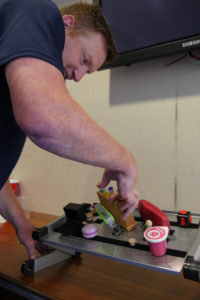
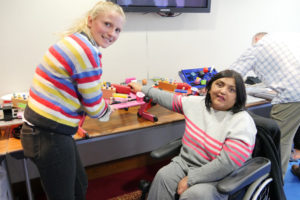
 You might also want to buy some cards to support ARNI!
You might also want to buy some cards to support ARNI! 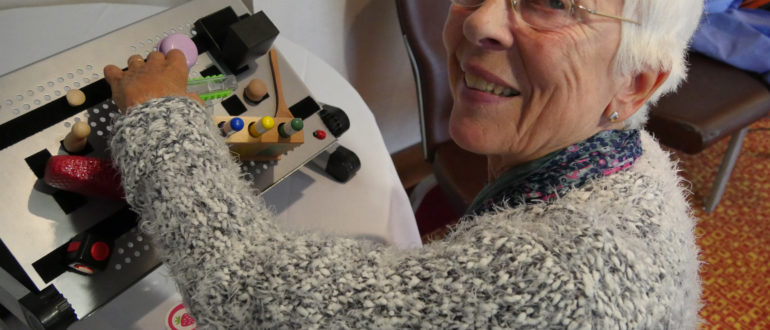
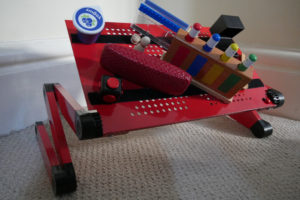
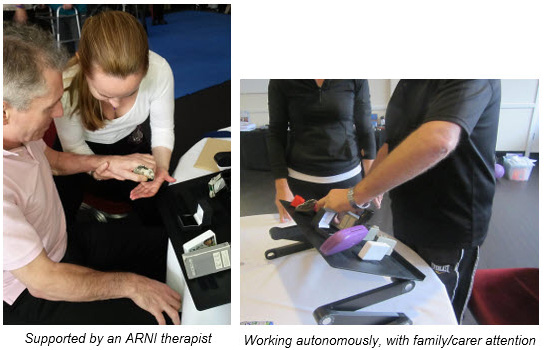 These are really great for people to try, if there is spasticity or flaccidity present – and this is the stepping stone that we have found for countless ARNI patients over the years that works to progress their hand from one phase to another. Best advice is always start off with the wooden pegs in slots. Physiotherapists have, among their many upper limb measures, a test called the ‘9 hole peg test’. This is an idea borrowed and scaled up from that test, with slots to enable practice. Advice is (all present in the Guide), is to start off with these, working on ‘getting the gap’.
These are really great for people to try, if there is spasticity or flaccidity present – and this is the stepping stone that we have found for countless ARNI patients over the years that works to progress their hand from one phase to another. Best advice is always start off with the wooden pegs in slots. Physiotherapists have, among their many upper limb measures, a test called the ‘9 hole peg test’. This is an idea borrowed and scaled up from that test, with slots to enable practice. Advice is (all present in the Guide), is to start off with these, working on ‘getting the gap’.


 Given that around 1 in 5 women, and around 1 in 6 men will have a stroke in their life, you really need to be aware and checking up on this.
Given that around 1 in 5 women, and around 1 in 6 men will have a stroke in their life, you really need to be aware and checking up on this.
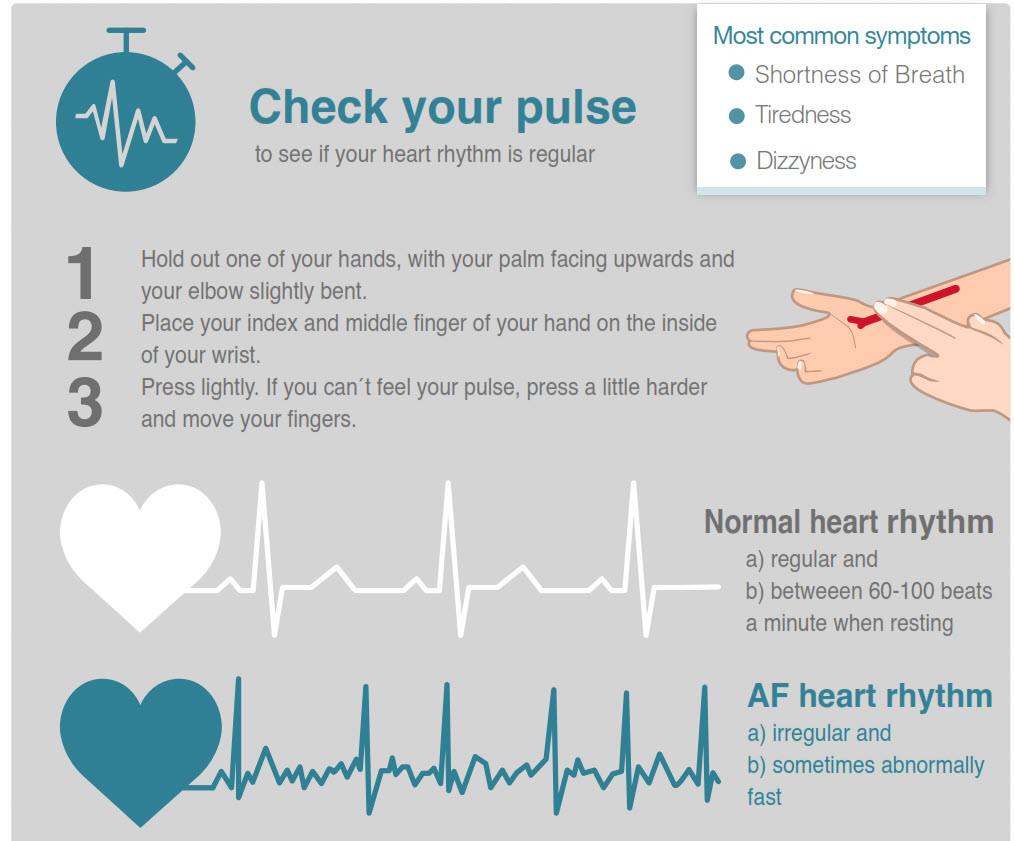


 The 13th UK Stroke Forum Conference takes place at The International Centre, Telford, from 4 – 6 December 2018 and it welcomes stroke survivors who want to find out more about how to tackle their residual limitations.
The 13th UK Stroke Forum Conference takes place at The International Centre, Telford, from 4 – 6 December 2018 and it welcomes stroke survivors who want to find out more about how to tackle their residual limitations.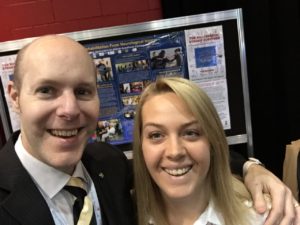
 Come and see us at the ARNI table at the Charities section! We have been running a table for 10 years at this outstanding Conference.
Come and see us at the ARNI table at the Charities section! We have been running a table for 10 years at this outstanding Conference. 
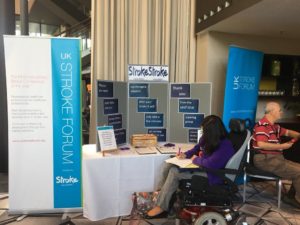 If you need to know a little more about Conference before registering interest/calling the Stroke Association, please email tom@arni.uk.com and I’ll do my best to help with questions/steer to the right person at Stroke Association who can answer your question(s) asap…
If you need to know a little more about Conference before registering interest/calling the Stroke Association, please email tom@arni.uk.com and I’ll do my best to help with questions/steer to the right person at Stroke Association who can answer your question(s) asap…